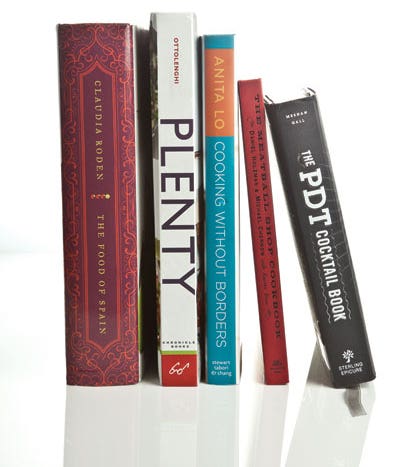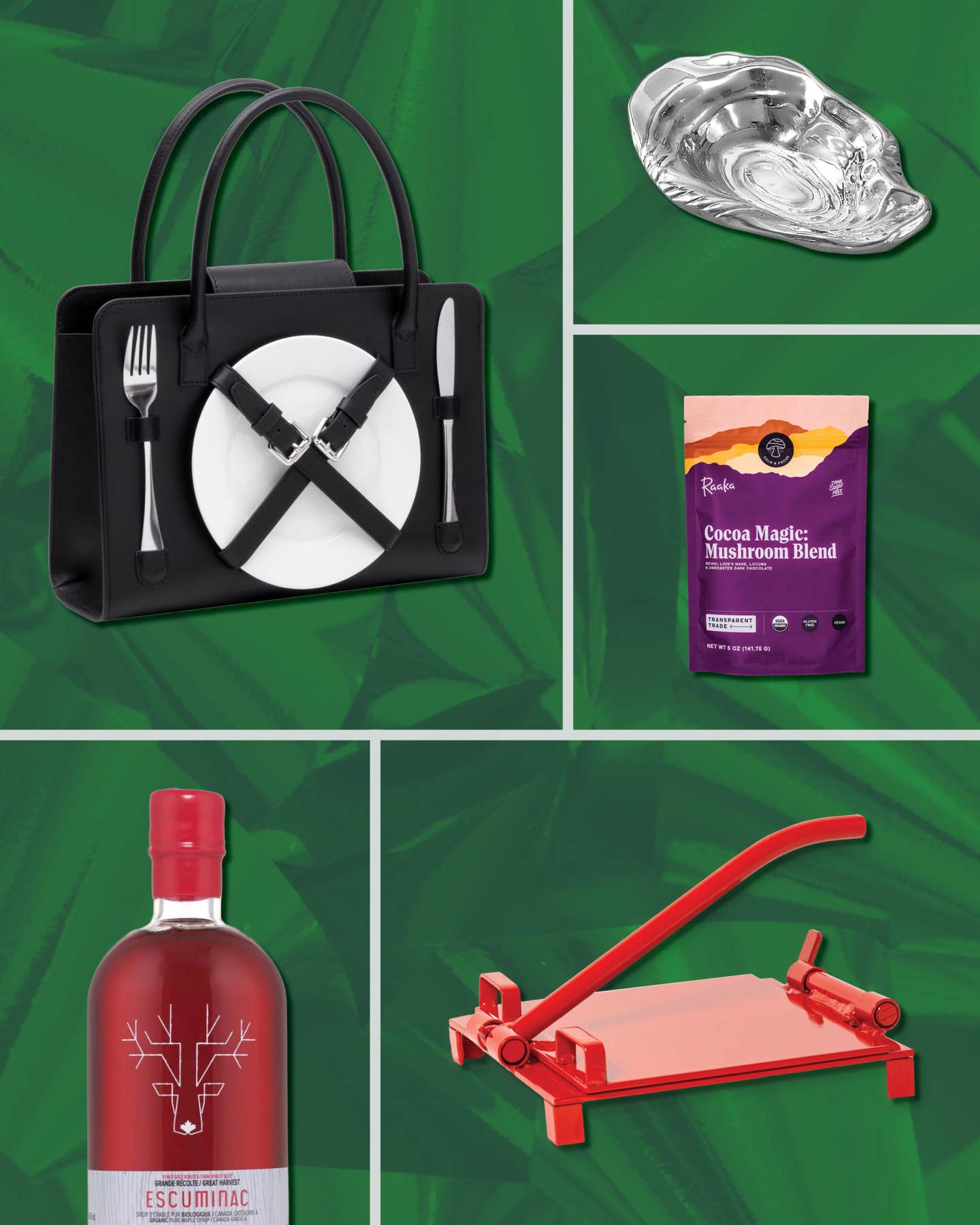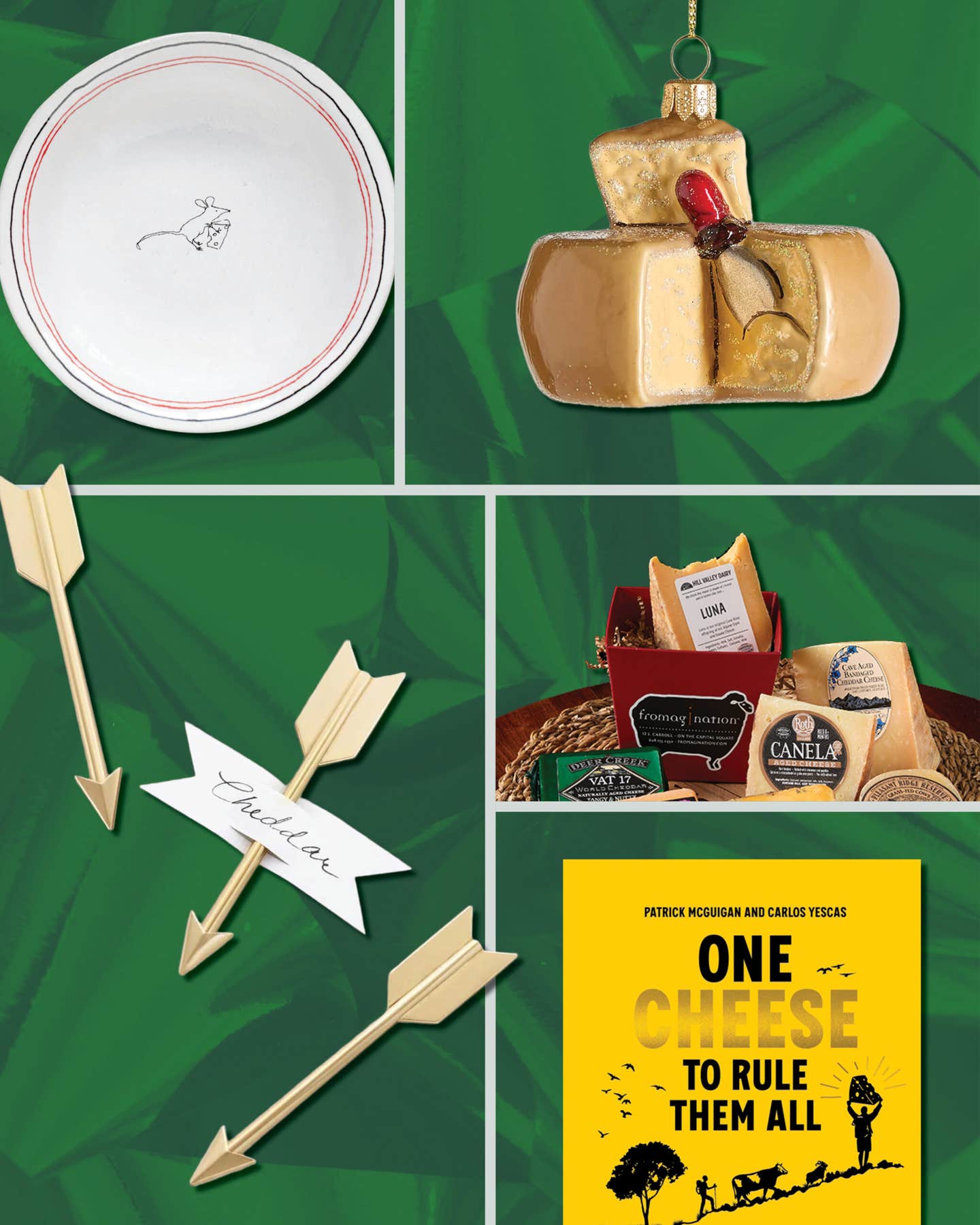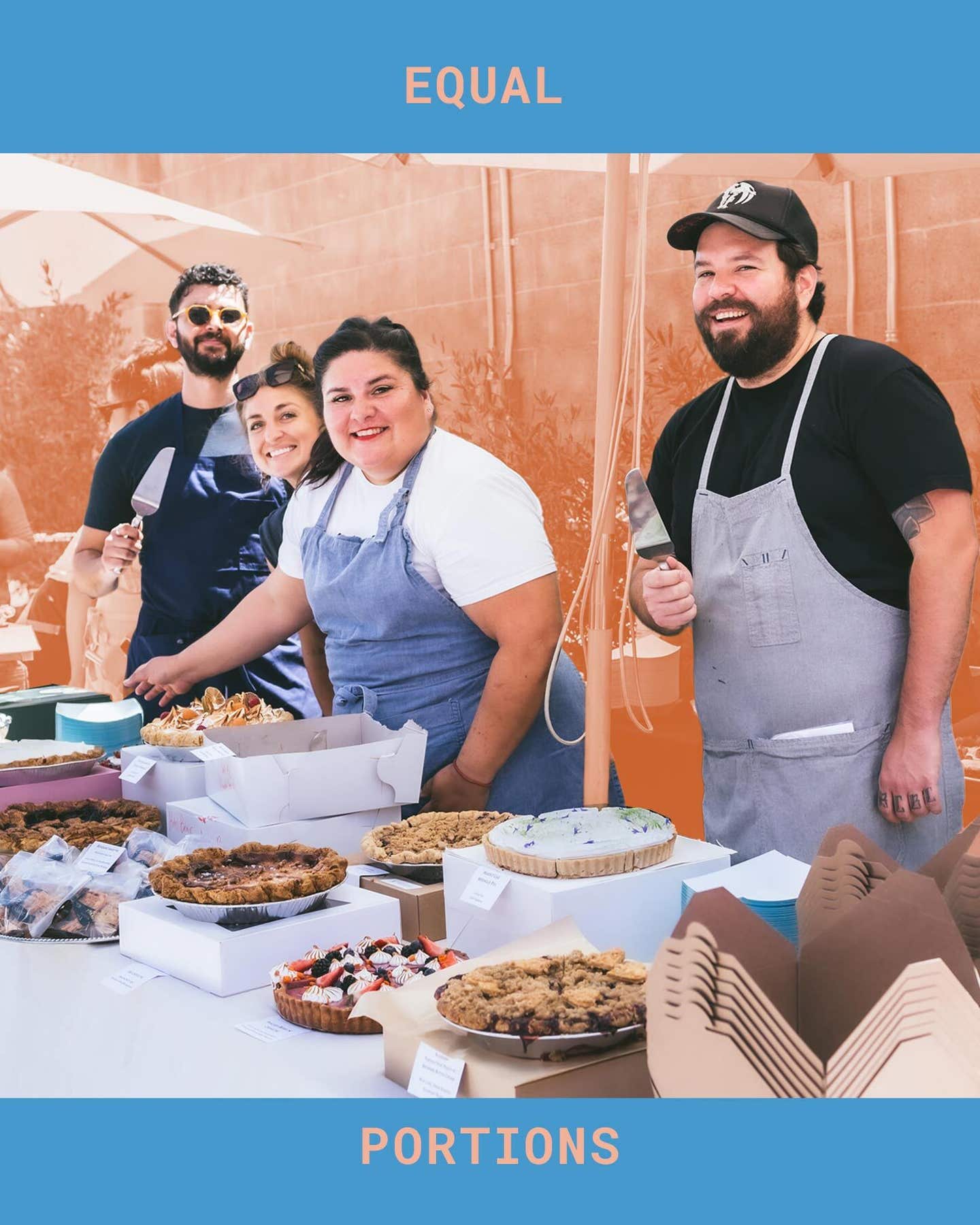
A Readable Feast
From a chef’s intimate recipe memoir of her culinary influences to a lyrical exploration of Iberian gastronomy to a no-holds-barred celebrations of all things meatball, 2011 has been a banner year for cookbooks. Here, SAVEUR editors share some of their favorite publications of the past year.
Cooking Without Borders
Anita Lo and Charlotte Druckman (Stewart, Tabori & Chang, $35)
Buy on Amazon »
There are chefs' cookbooks so lofty you could get a nosebleed, and those so dumbed-down that the food bears little resemblance to what you'd find in their restaurants. This book from Anita Lo, chef-owner of Manhattan's Asian-inspired Annisa, transcends both categories. It is uncompromising, inspiring, and great to cook from. With sun-drenched photographs by Lucy Schaeffer, Cooking Without Borders doesn't claim to be the Annisa Cookbook, though signature dishes, like foie gras soup dumplings, are included. Rather, it offers a view into Lo's cooking life and influences: her Malaysian-Chinese mother's food and her family's travels; her training under chefs such as Guy Savoy; her gardening and fishing. In the process, it draws a map of Lo's polyglot palate, reflected in dishes like wasabi-laced vichyssoise, and poppy-seed bread pudding with Meyer lemon. Some cooks might balk at the latter recipe, which, in place of a cooking time simply advises to "bake until browned and set." But I can attest that the result was scrumptious, with minimal fuss. —Beth Kracklauer
The Food Of Spain
Claudia Roden (Ecco, $39.99)
Buy on Amazon »
I've never associated Claudia Roden, the author of the incomparable Book of Middle Eastern Food (Alfred A. Knopf, 1972), with Spanish cooking. But a casual perusal through her new book on the subject turned into hours of reading, followed by many happy days in the kitchen. Through The Food of Spain, I began to understand Spanish cuisine in the way that Roden has helped me understand Middle Eastern Cooking: viscerally and texturally. I learned how eggs add not only voluptuousness, but also flavor and substance to Spanish classics like vegetables with tomato and hard-boiled egg vinaigrette; how elemental ingredients, like salt cod and onions, can be elevated to stunning heights. A dish of stuffed peppers couldn't be simpler (see page 22 for a recipe), with not much more than olive oil, rice, oregano, and saffron. But it tastes deliciously of the Spanish countryside in summer, and it's a testament to how the proper application of heat (in this case, roasting, as compared to stewing or braising) makes all the difference. Alongside the recipes and Jason Lowe's splendid photographs are chapters dedicated to the historical, regional, and daily contexts of Spanish food, not to mention its Moorish and Jewish influences. In that connection, and in its depth, breadth, and beauty, The Food of Spain is clearly the next step in this acclaimed author's beautiful body of work. —James Oseland
Plenty
Yotam Ottolenghi (Chronicle Books, $35)
Buy on Amazon »
Before I cooked from this book, I lusted over its looks: a full-page photo of sauteed arugula with just-set eggs; a close-up of lima beans, fried and tossed with feta and sorrel, topped with enough sumac to set my mouth watering. This is food porn of the highest order; I wanted to cook and eat it all. Once I got into the kitchen with Plenty, I understood why Ottolenghi, who owns five London eateries, is famous for his takes on vegetables and grains. The chef, who was born in Israel, draws mostly from Middle Eastern and Mediteranean cuisines, often in the same dish: His saffron pasta with brown butter flavored with ginger, cinnamon, fresh mint, and a half dozen other spices, is a brilliant cultural mash-up. But he's not afraid to range; one of my favorite recipes is a fiery fried tofu, seasoned with black pepper and scallions (see below for a recipe). His intense approach to flavor made me see ingredients in a new light: I don't often get excited by quinoa, but married with radishes, avocado, favas, lots of cumin and chile flakes, it's hard to resist. —Dana Bowen
The Meatball Shop Cookbook
Daniel Holzman, Michael Chernow, and Lauren Deen (Ballantine Books, $28)
Buy on Amazon »
Greek keftedes, Chinese lion's heads, English faggots—nearly every cuisine has its meatballs. Chef Daniel Holzman and manager Michael Chernow capitalized on the food's universality when they opened the Meatball Shop in Manhattan in 2010. Their concept translates seamlessly to this cookbook, which offers variations from classic beef to a Thai-inflected version made with pork and shrimp. The majority of the recipes call for fewer than 10 ingredients, and many are staples that most cooks have on hand. On top of easy execution, the authors add wit, evident in dishes like the Bambi Balls, made with ground venison, juniper berries, and port. But, despite multicultural nods, The Meatball Shop Cookbook owes its largest debt to Italy and Italian America; many of its recipes are updates of those cuisines. Pesto is grounded with earthy spinach, risotto gets a hit of fennel, while vegetables like beets with almonds, pecorino, and watercress add elegant dimension to the book. —Ben Mims
The PDT Cocktail Book
Jim Meehan (Sterling Epicure; $24.95)
Buy on Amazon »
Jim Meehan, the co-owner of PDT, a latter-day Manhattan speakeasy serving superb tipples, spills his secrets to creating perfect drinks, and the perfect drinking environment, in this book, jauntily illustrated by Chris Gall. Meehan doesn't entirely demystify mixology—he calls for a breathtaking range of esoteric ingredients; I had to hunt down lemongrass and cinchona bark just to make a gin and tonic—but the results are giddily delicious. My first lesson: Go for balance. Meehan adds orange juice to an Aperol Spritz of seltzer, prosecco, and the namesake Italian bitter, bringing fruity equilibrium to this classic refresher. I also learned that small gestures count: A pinch of salt coaxes sweetness from the Edgewood, a mix of gin, grapefruit, Punt e Mes vermouth, and Lillet. Its creator, Greg Best, is quoted: "I had been bartending for five years and realized I was only standing at the edge of the (proverbial) woods." It's an apt remark for this book. Its first impression is mind-boggling, but its parting gift is a touch of mastery. —Betsy Andrews
Keep Reading
Continue to Next Story










